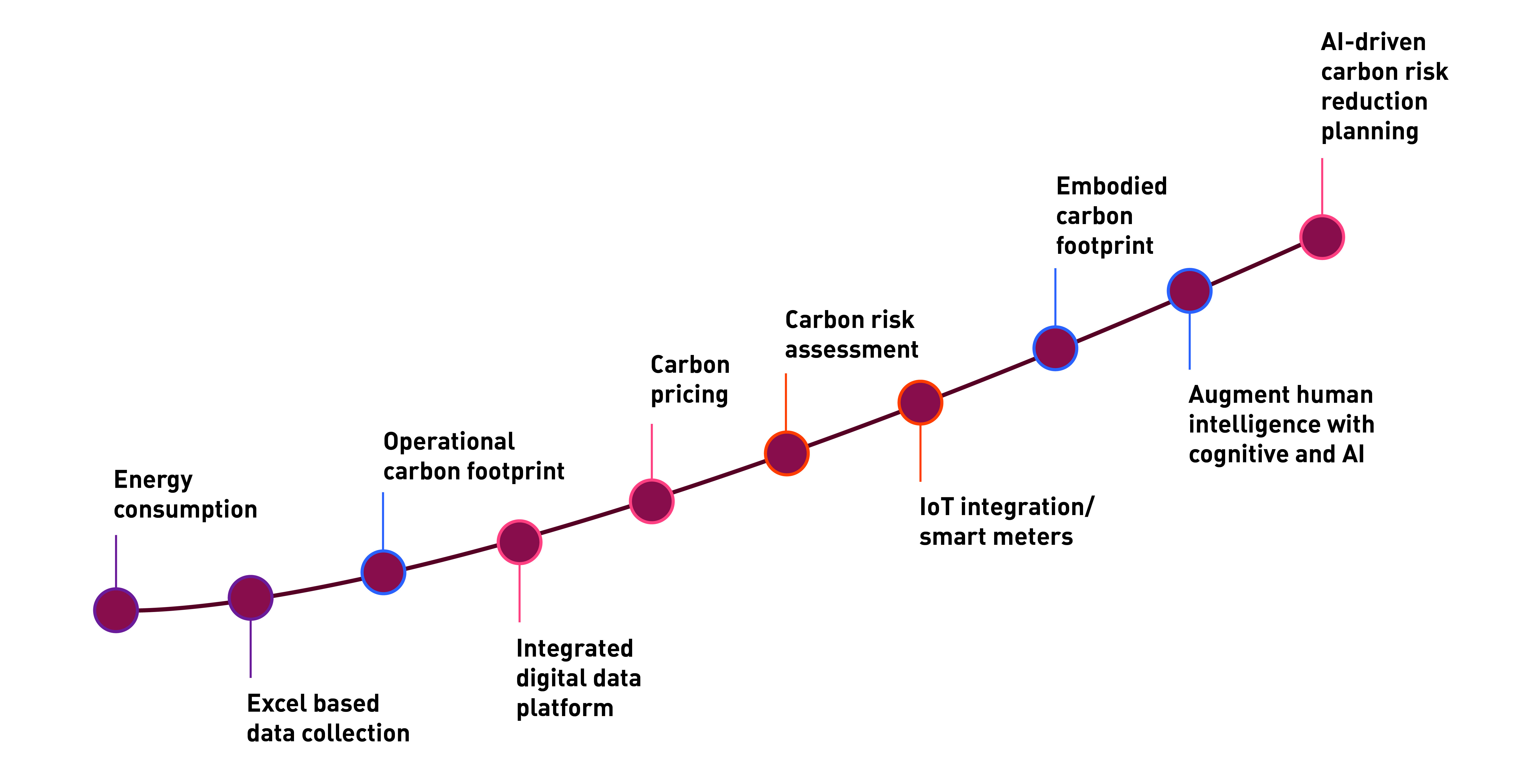Energy & Resources:
Mastering one of the industry’s biggest challenges
After the Digital Building Twin cluster, we are welcoming the Energy & Resources cluster to the real estate industry’s first Common Data Model. In cooperation with the Institute for Real Estate Economics (IIÖ), the CDM has been expanded to include energy consumption, greenhouse gas emissions and carbon risk, and is now fully compatible with the Carbon Risk Real Estate Monitor (CRREM) methodology.

Universal metrics for environmental impact
More and more companies have pledged to comply with the Paris Agreement but the concrete steps to do so are still being defined. With the launch of our new Energy & Resources cluster, we are establishing a unified model and pursuing our strategy of consolidating standards. This addition will enable companies to better benchmark progress and model building scenarios for better decision-making. By making carbon risk more clear and tangible with standardized metrics, decision-makers will be able to make their decarbonization strategies for the building sector measurable, analyzable and – most importantly – targetable.

Benchmarking the Paris climate protection targets
The CRREM decarbonization pathways, which have now been adopted by the EU Taxonomy on Sustainable Finance and the UN Asset Owner Alliance and others, translate the Paris Agreement’s general climate protection targets into specific and actionable CO2 targets – meeting those targets means having the data that can correspond and correlate.
That’s why we developed a sustainability cluster that makes it possible to map the carbon footprint of both entire real estate portfolios and individual buildings in the most granular detail. This new cluster also supports complex calculations and scenario simulations around carbon risk, stranded assets and CO2 pricing. Specific measures for CO2 savings, cost reduction and risk avoidance can be planned more precisely and the impacts of measures can also be modeled quantitatively.
Ensuring complete compatiblity with GRESB
CRREM implementation also ensures that the CDM for Real Estate is compatible with common industry standards such as GRESB (The Global ESG Benchmark for Real Estate Assets), the recently piloted ECORE sustainability standard, and its related scoring system.
Benchmarking a whole real estate portfolio or individual building with the CDM for Real Estate according to GRESB and mapped in ECORE is now as simple as the push of a button. The Energy & Resources cluster makes it possible to process electricity, natural gas and district heating energy consumption as well as national and yearly-based conversion factors for greenhouse gas emissions, as well as decarbonization targets and carbon risk indicators related to stranded assets and carbon pricing.
Building a more comprehensive Common Data Model for Real Estate
Our mission is to continuously expand and improve the International Building Performance & Data Standard and make accessible to all. We draw on existing and widely adopted industry standards to develop a standardized, international data language and semantics that serve as the foundation for cross-company and cross-system data use.
In addition to Energy & Resources, work is progressing on a range of other relevant clusters. Sign up for our newsletter and follow us on social media to be notified as they’re released.
Our mission is to continuously expand and improve the International Building Performance & Data Standard and make accessible to all. We draw on existing and widely adopted industry standards to develop a standardized, international data language and semantics that serve as the foundation for cross-company and cross-system data use.
In addition to Energy & Resources, work is progressing on a range of other relevant clusters. Sign up for our newsletter and follow us on social media to be notified as they’re released.
